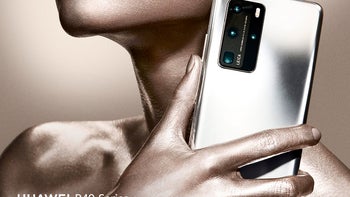Why metal phones are gone and battery life's a compromise: an interview with Huawei's lead designer

We recently sat down for a virtual interview with Huawei's chief designer of the flagship P-series of phones Quentin Ting, and he was patient and eloquent enough to thoroughly answer all the pressing questions of the tech press gathered for the occassion.
PhoneArena: To what extend does the trend for increased camera lenses and 5G antennas limit you as a designer? For example, the P40 Pro is one of the most compact phones in its class, but its battery is a bit smaller than the Mate 30 Pro. What are the inside space tradeoffs, now that every phone must come with 3 or 4 cameras on the back?
Quentin Ting: In our smartphones we must now have 5G with more antenna frequencies, and multiple cameras and lenses. All of these occupy space in the smartphone and at the same time we also need to include basic needs like a decent battery size. We must consider all these elements and make a final decision. If you ask me whether we made a tradeoff between the big camera module and battery life, then yes, this is what we had to do.
PhoneArena: With the iPhone SE2 just launched, is Huawei considering following this trend to make a smaller device?
The curiosity ranged from how the new matte shimmer and quad-sloping display design of the P40 models was achieved, to why aren't all camera islands centered at the rear of the phone, and anything in-between.
Amidst references to the Eiffel Tower engineering project and Chinese poetry styles when comparing the more orthodox P-Series flagships with the experimental Mate line of Huawei phones, Mr Ting was kind enough to entertain our pointed curiosity on the following topics (lightly edited for clarity):
Quentin Ting: In our smartphones we must now have 5G with more antenna frequencies, and multiple cameras and lenses. All of these occupy space in the smartphone and at the same time we also need to include basic needs like a decent battery size. We must consider all these elements and make a final decision. If you ask me whether we made a tradeoff between the big camera module and battery life, then yes, this is what we had to do.
PhoneArena: With the iPhone SE2 just launched, is Huawei considering following this trend to make a smaller device?
Quentin Ting: We take into account many elements including price and market share before releasing a product. From my view as a designer, for now there are a lot of apps that require a larger display and the experience of using such apps on a larger screen is much better than on a small display. Consumers don’t really want a smaller phone, they want a smaller device with a bigger display so as designers we must ensure that they can have this large display experience instead of going back to old times with smaller screens. One solution to this would be a foldable phone.
PhoneArena: The Мate series has the signature centralized and round camera bump, I have gotten a lot of compliments about this, as it immediately comes across as differentiating. Will it be able to keep the symmetric camera bump positioning with the new periscope lens style, are there any restrictions to having the cameras in the center of the Mate series now?
Quentin Ting: This is a very good question. We tried to pursue different design for the different flagship series. When we put the camera modules in the center it creates a classical design. You could compare a Mate 30 to a Palace with its beautiful symmetry.
Among the numerous other questions that Mr Ting answered, one in particular caught our attention, whether it is getting harder or easier to design smartphones these days, given that a sort of a cookie-cutter glass-on-metal with camera island approach is predominant now.
It turns out that the new requirements for multiple 5G antennas and very fast wireless charging standards might mean that metal phones aren't coming back, as much as Mr Ting would love to play with metal for some new and breathtaking design takes on phones like the P40 series:
Because of 5G we had to abandon using metal for the back cover because this would interrupt the signal. With this, we began experimenting with exciting new materials instead. In the past there was only one camera, now with more we have more choices in our design how to display the cameras, this is allowing us to create more interesting designs...
When starting on new product, the whole process from thought to advertising is set at 18 months, and every now and then new applied science is discovered to make a thing heretofore unattainable, imaginable. With the P40 series, the display industry advancements allowed us to have curves on all four sides of the display all the while preserving the spherical corners.
To make sure that people like our products, we wish to blend two elements: familiarity and wonder. We wish to be offering one thing that folks are accustomed to, and an element of surprise. Just like a chef making a brand new dish, a couple of components are blended in combination to create a scrumptious result...
When starting on new product, the whole process from thought to advertising is set at 18 months, and every now and then new applied science is discovered to make a thing heretofore unattainable, imaginable. With the P40 series, the display industry advancements allowed us to have curves on all four sides of the display all the while preserving the spherical corners.
There you have it, metal phones are largely gone, yet this doesn't mean that design innovation like the ebullient matte silver frosting of the P40 Pro and Pro+ can't still happen to soothe our design pains until something else and completely different comes along, and gets tagged as premium material.










Things that are NOT allowed: